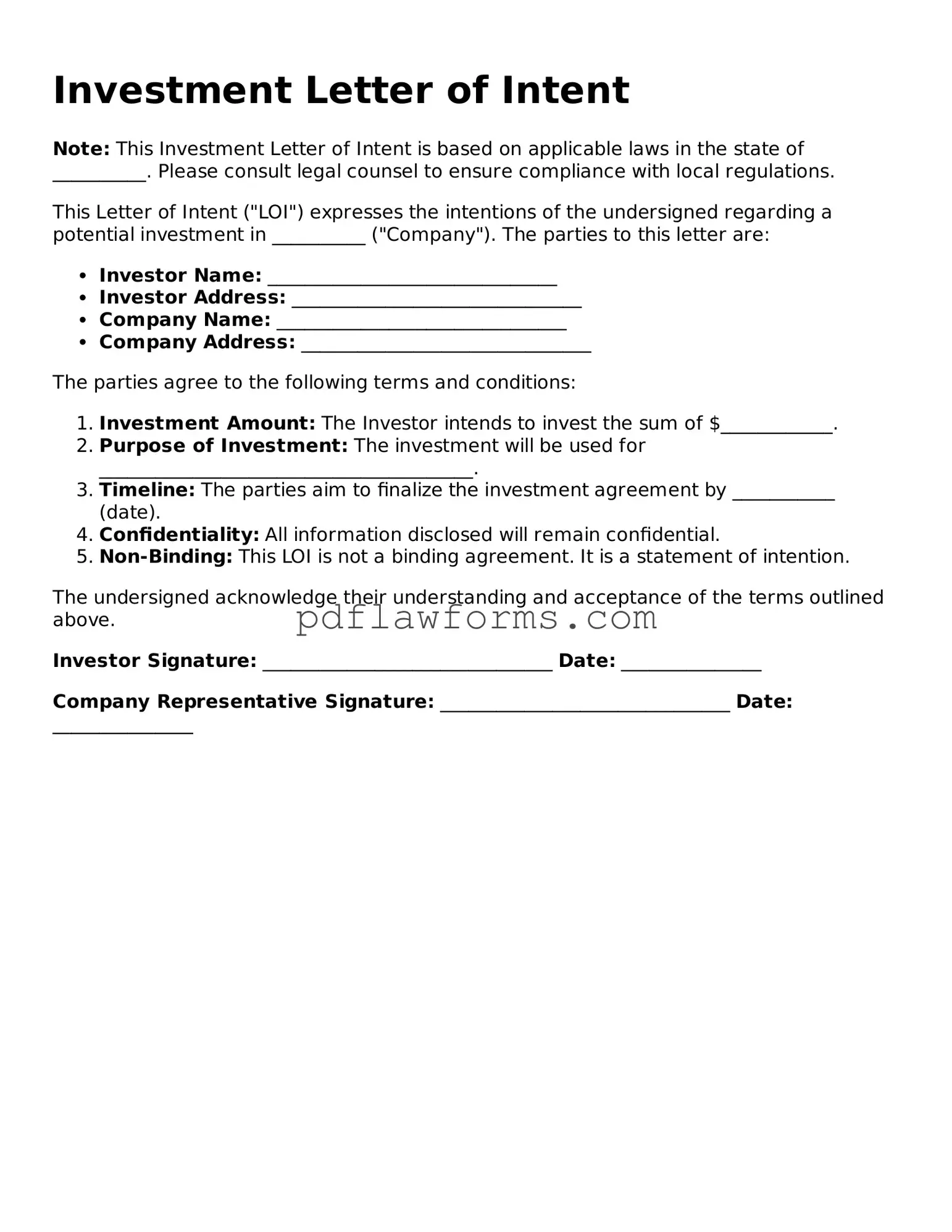Official Investment Letter of Intent Form
An Investment Letter of Intent form is a document that outlines the preliminary terms and conditions of a potential investment agreement between parties. This form serves as a starting point for negotiations and helps clarify the intentions of both the investor and the recipient. By filling out this form, you can take the first step toward formalizing your investment plans.
Click the button below to fill out the Investment Letter of Intent form and move forward with your investment journey!
Make My Document Online
